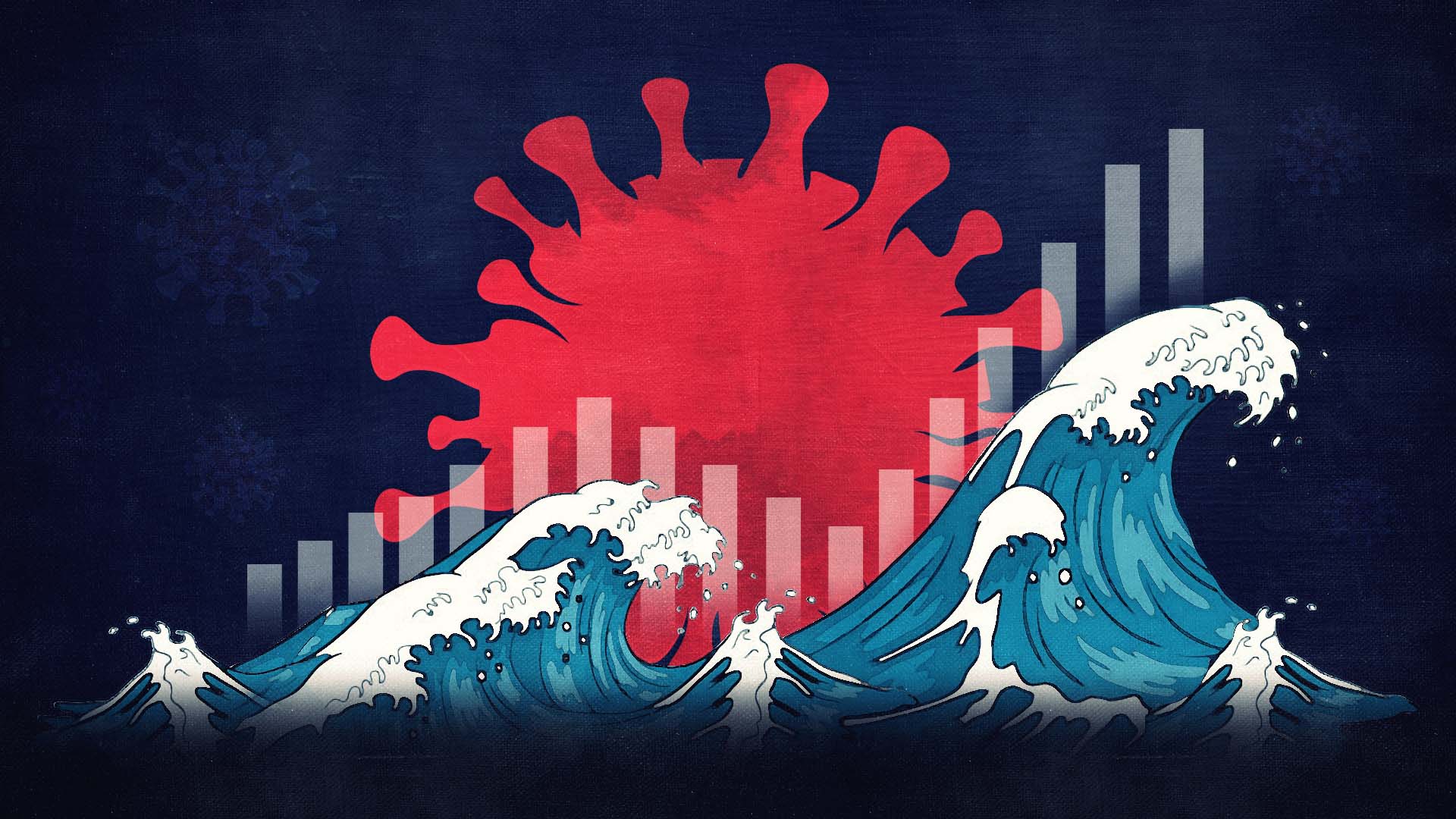In order to limit the risk of renewed infections, the Ministry of Health established sanitary measures to be applied depending on the country of origin. However, this classification led to misunderstandings: several countries considered to be at risk, such as France or Italy, were placed on the "green list," exempting travelers from testing and confining.
Since then, the number of reported cases has continued to increase, with 87% of them reportedly coming from green-listed areas. Some countries, including France and Belgium, have again been placed on the orange list, which requires testing and quarantine. The authorities also announced that all travelers will now have to provide an RT-PCR test when entering the country from August 26. But the new infection figures - which include a large number of local cases - show that a new COVID-19 outbreak has already begun.
Inkyfada uses various figures of the epidemic to compare the evolution of the situation after the opening of borders on June 27 with the period following the discovery of the first case on March 2, with the aim of better understanding the risks represented by the return of COVID-19 to Tunisia. Based on the obtained data, Inkyfada considers June 10 as the end of the first wave, given that no new cases were counted for several days and that the hospitalization rate had also dropped.
A SHARP RISE IN THE NUMBER OF CASES
Cumulative active cases since first reported case (March 2, 2020)
On 18 August 2020, Tunisia hit its peak of active cases: 972 people were infected by COVID-19. From the beginning of August, the number of active cases has grown at the fastest rate since the start of the epidemic.
During the first wave, the number of active cases recorded peaked at no more than 784 patients on April 16, 2020. From that point onwards, and especially during the month of May, the rate of active cases declined. This was a result of the policies put in place to contain the epidemic. By June 13, there were only 49 active cases across the country. Subsequently, the month of June saw a slight rebound that gained momentum in the weeks following the reopening of the borders.
Daily new cases across the first and second waves
For the first time since the beginning of the COVID-19 epidemic in Tunisia, the threshold of 100 new daily cases was surpassed on August 14, 2020. In comparison, during the first period, this figure peaked at 59 new cases on March 24 and steadily declined thereafter.
During the first wave, the rate of contamination began to drop one month after the discovery of the first case. On the contrary, since June 27, and particularly from August onwards, the number of new cases has risen steadily.
Weekly averages of daily new cases across the first and second waves
Between July and early August, the number of new cases per day increased on average by about 15 patients. Afterwards, this number accelerated sharply; almost tripling between August 8 and August 15.
Cumulative number of cases across the first and second waves
By August 15, the number of infections exceeded that of the first wave over the same time period. Since then, unlike the first wave, during which the curve gradually flattened, the rate of infections has continued to rise exponentially.
Number of tests performed across the first and second waves
Overall, since the opening of the borders, more tests have been carried out than at the beginning of the epidemic. By August 6, 1,743 tests were performed, compared to only 562 in the same time period on April 11.
However, despite the significant increase in the number of cases, the authorities are still far from practicing a policy of mass screening despite the recommendations of the World Health Organization (WHO). They are primarily testing people who have been in contact with the infected in order to limit the risk of transmission.
The latest rounds of testing were mainly aimed at screening people present in hotspots of infection, such as at Tunis airport or in the governorates of Gabes, Sousse, Medenine and Kairouan. "For example, when they decided to test all airport staff, it was necessary to do 400-500 per day," said the director of the Pasteur Institute, Hechmi Louzir. According to him, discovering high-risk areas would mean multiplying this rate of testing, "which explains the variations." A new variable has also been introduced: travelers coming from or departing from certain countries must now undergo an RT-PCR test to check that they are negative.
LOCAL VS. IMPORTED
number of cumulative local cases across the first and second waves
After the opening of the borders, while the transmission chains were under control domestically, new infections arrived mainly from abroad. Thus, the first local case was not detected until July 13 and the curve gradually took off only one month after the opening of the borders. In March, by comparison, reported local cases multiplied rapidly.
During the first wave, local cases increased steadily and began to plateau two months after the detection of the first case. On the contrary, after the reopening of the borders, the curve began to increase very rapidly around August 10. On August 16-17, more than 100 new local cases were discovered.
This wave of infections presents several dangers: in addition to multiplying the risks of spreading the epidemic, it could make the tracing of the different chains of transmission difficult, especially in the case of asymptomatic patients.
Cumulative number of imported cases across the first and second waves
For about 40 days, the curves for imported cases followed a similar pattern, although more cases were imported after June 27 compared to after March 2. Subsequently, the trends changed: the number of cases imported after the opening of the borders continues to increase, almost at the same pace. In contrast, from April 9, the curve of the first wave flattened and stabilized, not exceeding 300 cases.
The differing trends can be explained by the measures taken by the authorities throughout the month of March. With the closure of the borders introduced on March 18, the risk of sick people coming from abroad was significantly reduced.
Distribution of the number of local and imported cases in first wave (1st graph) and second wave (2nd graph)
During the first wave, the number of local cases very quickly exceeded the number of imported cases. As of March 27, the authorities counted a total of 130 local cases compared to 120 imported cases.
Since the reopening of the borders, the opposite trend can be seen. The number of imported cases exceeded local cases until August 15. At this date, the authorities counted 486 locally infected patients compared to 453 imported ones. Contrary to the first wave, the number of local infections is not decreasing: instead, the rate has been increasing exponentially, especially since August.
MORE CASES BUT FEWER DEATHS
number of cumulative hospitalized cases across the first and second waves
Despite the sharp rise in the number of infections since June 27, the rate of hospital admissions remains, for the moment, much lower than during the first wave. On August 14 and 15, the number of people with deteriorating conditions peaked at 24. In comparison, on April 19-20, there were 131 people admitted to hospital.
The low rate of hospital admissions could be partly explained by the fact that, according to information provided by the National Observatory of New and Emerging Diseases (ONMNE), 85% of newly infected people are asymptomatic. They would therefore not require any special care. But even without apparent symptoms, these people remain contagious and if not detected, they may infect vulnerable groups and avoid the radar of the authorities.
Number of deaths across the first and second waves
Similar to the pattern of comparatively low hospital admissions, only about ten deaths have been recorded since June 27. So far, according to the available data, the first wave seems more severe and deadly. However, since the beginning of August the mortality rate has increased slightly, with three people dying on August 17-18.
On Wednesday, August 19, 113 new cases were detected. Given this increase, a number of measures have been introduced to slow down the spread of the virus, particularly by the local authorities in some infection hotspots. Nationally, authorities are also planning to make masks mandatory in certain locations and regularly change regulations regarding entry into the country. However, they are not considering a return to general confinement or other more restrictive measures.




